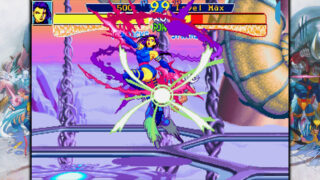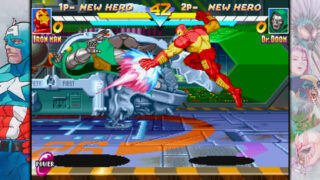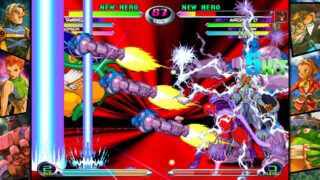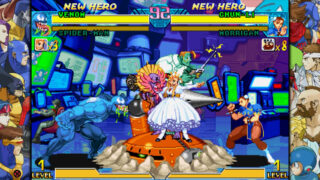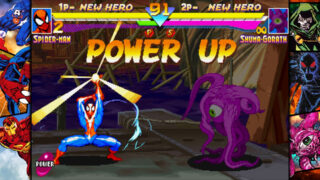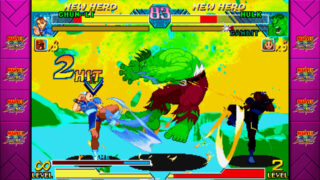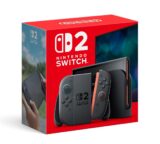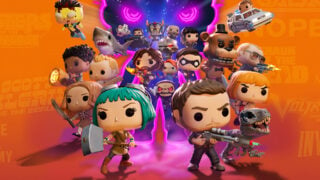Marvel vs Capcom Fighting Collection takes you for a ride, and then some
The first home console release for The Punisher is the cherry on top
- Game designer
- Yoichiro Ikeda
- Key Credits
- Yusuke Ishizuka (Game designer), Ryohei Matsumoto (Game designer)
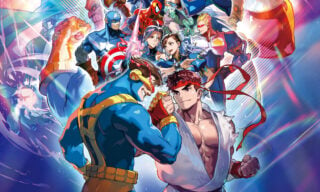
Capcom’s no stranger to a retro re-release but this latest offering is particularly special.
For the longest time, Marvel vs Capcom and its sequel were considered the ultimate crossover fighting games, with the second game in particular boasting a staggering roster and near-endless 3-fighter team possibilities.
Although this retro compilation names Marvel vs Capcom in the title, Capcom hasn’t been content with simply slapping both games together and giving us an Ace Attorney Investigations style double-bill.
Instead, it’s also included the four Marvel-licensed fighting games that preceded Marvel vs Capcom, so players can see how we got to that point. Then, just to round things off, it’s nonchalantly chucked in the first ever home release of a cult favourite arcade beat ‘em up.
It makes sense to start with the latter, because it’s also the earliest of the seven games on offer. Released in 1993, The Punisher retells the story of the comic series and has you playing as the man himself as he kills his way through countless bad guys in search of justice for his murdered family.
Although it did get a heavily watered down Mega Drive port, the ‘proper’ arcade version of The Punisher has never made it to home consoles before, and fans of beat ‘em ups will thoroughly enjoy it. Capcom had a shining reputation for the genre ever since it essentially rewrote the rule book with Final Fight in 1989, and The Punisher is a brilliant example of this, especially in this uncut form.
Whether you’re playing as the Punisher himself or jumping into the P2 role and controlling Nick Fury, this is a solid beat ‘em up which now has us wishing Capcom could just pay up to reacquire the Cadillacs and Dinosaurs licence so we can have that beat ‘em up back too (both games were released in the same year and are very much in the same boat in terms of quality).
While an arcade favourite beat ‘em up getting its first home release after 31 years is no minor thing, it’s the one-on-one fighting games that still take centre stage here. First up are the four games that started Capcom’s fighting game relationship with Marvel, one that started off exclusively focusing on the X-Men before evolving to eventually embrace the crossover concept.
X-Men: Children of the Atom is the first entry, and is somewhat reminiscent of Darkstalkers, which was released six months before it. That said, the X-Men game is more over-the-top, thanks to things like Super Jumps which blast you off the top of the screen, giving far more verticality than in other Capcom fighters.
With a roster of 10 characters (not including a couple of comically cheap non-playable bosses), X-Men: Children of the Atom is naturally the least in-depth of the games on offer, but it’s still a fun time. The presence of Street Fighter’s Akuma as a hidden character also marks the first instance of a crossover in the series, and would end up being a sign of things to come.
Not before the X-Men IP was expanded further to take in all of Marvel, however. Enter the second game, Marvel Super Heroes, which does the same sort of thing but this time offers an initial roster of 10 characters from across the Marvel universe including Spider-Man, Hulk, Iron Man and the like. A new Infinity Gems system also adds more variety, giving players special powers they can activate.
The third game was the first to properly embrace the idea of a crossover, with the title – X-Men vs Street Fighter – more or less summing it up. Bringing together eight X-Men characters (mostly taken from Children of the Atom) and nine Street Fighter characters (lifted from Street Fighter Alpha 2), the game combines the Super Jumps from the former and things like air combos from the latter to mark the first proper ‘Versus’ game in the series.
X-Men vs Street Fighter also introduced the tag mechanic to the series, with players choosing a team of two fighters who could be swapped between while playing. This carried on to the fourth game, Marvel Super Heroes vs Street Fighter, which again offers a roster of 17 fighters but this time expands the X-Men side to incorporate all of Marvel, while also introducing the Variable Assist move (where your partner can attack from the sidelines).
These four games – X-Men: Children of the Atom, Marvel Super Heroes, X-Men vs Street Fighter and Marvel Super Heroes vs Street Fighter – may not get as much playtime in this compilation because of the two main games that followed them, but their inclusion is a valuable way of seeing how the groundwork was laid.
“X-Men: Children of the Atom, Marvel Super Heroes, X-Men vs Street Fighter and Marvel Super Heroes vs Street Fighter may not get as much playtime in this compilation because of the two main games that followed them, but their inclusion is a valuable way of seeing how the groundwork was laid.”
It’s really Marvel vs Capcom and its sequel Marvel vs Capcom 2 which players will mainly be here for, however. The first game has a roster of 15 characters, opening the doors for other Capcom characters outside of the Street Fighter series, such as Mega Man, Strider and Captain Commando. The addition of 20 ‘Special Partners’ – who aren’t playable but can be called in as cameos to perform a move then leap out – further adds to the sense of a big mash-up taking place.
This pales in comparison, however, to the main event, Marvel vs Capcom 2. The sequel’s ridiculous 56-strong roster and its move from a 2v2 system to a 3v3 one makes it an absolute beast of a game that would be worth the price of admission alone. Its atrocious soundtrack aside, this is one of the best fighting games ever made in terms of pure spectacle and really makes the collection essential.
When it comes to extra features, this is where things fall a little thin on the ground. The Museum section is welcome but features little more than concept art, some design documents and a Music Player. Maybe we’re spoiled by the era when Capcom worked with Digital Eclipse on things like the Street Fighter 30th Anniversary Collection, which gave a lot of context to the content and gave full biographies for every character.
It does feel a little by-the-numbers, however, and we’d have liked some more content in there, especially written content shedding more light on the making of the games, or even just the characters. When you’ve got 56 characters in Marvel vs Capcom 2, things can get quite niche, and an explanation of who everyone is, what series they came from and other trivia like that would have been a great addition.

Given the relatively niche nature of the release, we’d have also liked to have seen crossplay online multiplayer in there. Instead, PS4, Switch and PC players will be kept apart, diluting the pool of potential opponents (which partially led to us never being able to find a match during our review period).
Another omission which would have taken far more work – and is therefore understandably absent – is Marvel vs Capcom 3, either in its Xbox 360 and PS3 version or its re-release on PS4 and Xbox One. While we’d never have expected to see something more recent like Marvel vs Capcom Infinite in here, the inclusion of the 2011 game would have made this a truly complete package.
As it stands, though, Marvel vs Capcom Fighting Collection is still a must-have for fans of the series. Marvel vs Capcom 2 in particular is an all-time classic, and the return of The Punisher after 31 years will be a point of celebration for beat ’em up fans. It may lack in gloss but it’s packed with gameplay.
Marvel vs Capcom Fighting Collection combines seven superb arcade classics, even though Marvel vs Capcom 2's superiority does make five of them feel a tad redundant. The addition of The Punisher is a welcome extra, but the Museum mode is on the basic side.
- Marvel vs Capcom 2 is as fantastic as it ever was
- The Punisher is one of Capcom's best beat 'em ups
- A solid collection of fighting classics
- Museum mode is a bit too by-the-numbers
- Online multiplayer isn't crossplay


